How these S’poreans plan to reshape the tuition industry with their “tutor marketplace app”

Like many Singaporean kids, Jerry sought tuition services as a student but encountered some struggles.
He found it difficult to find tutors on apps such as Carousell or Facebook with experience and qualifications he could trust. He felt frustrated when he went through middlemen as he could not communicate with his tutor directly.
“The most memorable was one occasion when a tutor came to my house expecting to find a primary school student! I was almost 18 at the time!” Jerry shared with a laugh.
His sister, Cherry Goh, also had a similar experience. A tutor assigned to her could not teach at her subject level, and she was eventually referred to her own tutor. On the other hand, her fiance, Edmen Tam, found it challenging to source students as a former tutor and tennis coach.
So, when Jerry pitched the idea of a “tutor marketplace app” in 2022, Cherry and Edmen instantly jumped in and invested their life savings into the venture.
With the additional financial support from family and friends, Scholarly finally launched in December 2023.
Sure, there were platforms like Carousell and Facebook, but they were not truly made for advertising services. Due to our shared frustration with how outdated, inaccessible and opaque the private tuition industry was, we decided to do something about it. That’s how the idea of Scholarly was born.
Edmen Tam, CMO and co-founder of Scholarly
Is it that big of a deal?
While the trio clarified that they did not consciously choose to enter the edutech sector, they were driven to resolve present issues in Singapore’s private tuition industry.
To Jerry, tuition is an age-old practice that remains integral to the education of the current generation of students today—one that would potentially remain for the foreseeable future. “I just saw the dying need for it in Singapore,” added Cherry.
Edmen, who worked in tech for over a decade, felt he could use his expertise to build a modern solution to help other learners, parents, and tutors in Singapore.

Through their app, it allows different stakeholders to “seamlessly” connect. However, to do that, they needed to have enough tutors and parents to generate traffic on the app, which was something that the founders struggled with at the beginning.
That was until the team introduced tuition jobs to the platform, leading to a significant uptick in engagement. Jerry explained that tutors enjoyed having the avenue to apply to jobs, while agencies and parents could post jobs to which tutors could apply.
Edmen added that he also scoured the Internet for tutors to connect and spread the word about the platform. He even spoke to “every single private tutor” on Carousell to get them on board, allowing them to achieve 60 tutor signups at launch.
“[It’s] not great, but we knew that we had to run a tight ship and listen to our users’ feedback to shape the app into what it is today,” he stated.
However, with any tech platform offering services, fact-checks are necessary to ensure the safety of tutors and seeking students. To get verified on the app, tutors must submit proof of their qualifications to be “manually verified” by the team, though they did not elaborate further on the process.
But the app is free. How do they earn money from it?
The team is working on a monetisation model similar to marketplaces and connection platforms like LinkedIn, Property Guru, and Carousell.
Jerry explained that the app’s core features will remain free, but there will be advertisement opportunities, such as boosting, for people seeking more exposure, allowing the company to earn from advertising fees.
The team also plans to introduce a premium version of the app to give users access to advanced features like improved management solutions, analytics, and other functionalities.
While the founders remained tight-lipped about their figures, Jerry expressed his confidence that their current strategy is sustainable in the long run.
In addition, tuition services are paid outside of the app, which raised concerns about whether the company has clear records of the transactions and ensures the safety of tutors and tutees.
Cherry clarified that while lessons booked via Scholarly are retained, they cannot track transactions outside the app. She added that the team plans to integrate payments directly into the app, allowing users to pay securely without leaving the platform.
She also pointed out that most users often leave the platform to continue communication on WhatsApp or Telegram. To boost in-app interactions, the company has introduced a revamped lessons feature that aims to improve the user experience with booking and managing lessons.
In the coming months, they will introduce more incentives to retain interactions in the platform, like an achievements feature and a redeemable points system for users who complete specific actions in the app.
How do they plan to stand out?
While some edutech startups use their tech solutions as their unique selling point, Scholarly believes in “humanising the connection” between their users and technology.
Edmen shared that the team consistently interacts with its users through surveys, assisting them with any issues they encounter and personally having profiles on the app that they can be reached out to at any time.
At the end of the day, Scholarly will always maintain a human touch because our ultimate goal is to connect two human beings together. All our technical features, like our AI-powered tuition jobs and our integrated chat features ultimately exist to improve and facilitate the connection between a student and a tutor.
Cherry Goh, CEO, CPO and co-founder of Scholarly
Maintaining connections with their users allowed the trio to establish trust and grow their database. Scholarly has 2,500 users, 1,400 tutors, and five to 10 agencies that post on the app regularly or semi-regularly to date.
The team relies on users’ feedback to ensure that the app continues to meet their evolving needs through new features. One such feature is Scholarly’s Artificial Intelligence (AI)-powered tuition jobs function.
According to Edmen, this feature aims to increase the efficiency in matching parents, students, and agencies and prevent information overload.
“Rather than sifting through the hundreds of tuition jobs posted across different Telegram channels or Facebook groups, a tutor can use Scholarly to easily find jobs across the country on a single platform,” he explained.
As the year ends, Scholarly will continue to work towards becoming a one-stop shop for all tuition-related services. “There is no other widespread app in the country with that same goal,” Cherry said.
Currently, the Scholarly team has launched a web beta version of their mobile app. It is also working on a series of upgrades that will be launched soon, including a tailored profile specifically for tuition centres on the app.
Also Read: This S’porean tutor won’t rest until online ed is the norm here, starting with A-Level Chem
Featured Image Credit: Scholarly
Singapore’s highest-demand careers: MOM releases the 2025 list of talent-starved jobs

Disclaimer: Unless otherwise stated, opinions expressed below belong to the author. Data comes from the latest official release by HDB.
Like most countries, Singapore is grappling with a shortage of qualified workers in its economy. With very low unemployment and more than 1.5 vacancies for each of those relatively few who are jobless, the pool of local talent is clearly very shallow.
So shallow, in fact, that the government is willing to grant bonus points to qualified foreigners seeking a local Employment Pass, making it easier for them to obtain it. But the tool it uses is just as valuable to locals.
Every year or two, depending on evolving needs, the Ministry of Manpower publishes a list of strategic occupations which endure the most acute shortages of qualified workforce—the SOL, “shortage occupation list”, which has just been updated for 2025.
Needless to say, this list is valuable not only to potential immigrants but to Singaporeans as well, as it highlights the most in-demand professions in strategic sectors of the local economy—clearly a boon to job applicants seeking to make the best career decisions.
Not only are jobs on the list in high demand but the shortage of applicants appears to be quite persistent, as there are not enough candidates even when the door to migrating to Singapore is opened a bit wider.
This increases your value as a potential hire if you’re looking for a better job in the city and also helps those making decisions about what to do in the future, as the talent deficit doesn’t seem to be going away anytime soon.
The list for 2025
The newest SOL, applicable from January 1, 2025, consists of seven industries and 30 occupations. Some of them are expanded with specific job titles that would qualify, wherever necessary:
Agritech
- Alternative protein food application scientist
- Novel food biotechnologist
Financial services
- Financial or Investment advisor (ultra-high / high net worth / family office / philanthropy)
- Investment advisor
- Relationship manager
- Wealth planner
Green economy
- Carbon project or programme manager
- Carbon programme manager
- Carbon project originator
- Carbon project manager
- Carbon standards & methodology analyst
- Carbon rating analyst
- Carbon standards & methodology developer
- Carbon trader
- Carbon verification & audit specialist
Healthcare
- Clinical psychologist
- Diagnostic radiographer
- Diagnostic radiographer
- Magnetic resonance imaging technologist
- Mammographer
- Medical diagnostic radiographer
- Radiologic technologist
- Occupational therapist
- Ergotherapist
- Occupational therapist
- Occupational therapist manager
- Occupational therapist researcher
- Physiotherapist
- Aquatic physiotherapist
- Clinical physiotherapist
- Physical therapist
- Physiotherapist manager
- Physiotherapist researcher
- Sports physiotherapist
- Registered nurse (and related)
Infocomm technology
- Artificial intelligence (AI) scientist / researcher or engineer
- Applications / systems programmer
- Cloud architect / engineer / specialist
- Cyber risk specialist
- Cyber compliance specialist
- Cyber governance specialist
- Cyber risk analyst
- Cyber risk manager
- Cyber threat monitoring analyst
- Cyber security consultant
- ICT resilience analyst
- ICT resilience manager
- ICT security consultant / specialist
- Information security analyst
- Information technology security specialist
- Cybersecurity architect
- Cyber defense incident responder
- Cyber incident responder
- ICT security operations analyst
- ICT threat monitoring analyst
- Information systems security developer
- Cybersecurity operations specialist
- Cyber defense incident responder
- Cyber incident responder
- ICT security operations analyst
- ICT threat monitoring analyst
- Data scientist
- Chief data scientist
- Data engineer
- Head of data analytics
- Digital forensics specialist
- Computer forensics expert
- Computer forensics investigator
- Cyber forensics expert
- Cyber forensics investigation specialist
- Cyber incident investigation specialist
- Cyber threat investigation specialist
- Digital forensic expert
- Digital forensics analyst
- ICT forensics expert
- Information forensics expert
- Penetration testing specialist
- Ethical hacker
- Exploitation analyst
- ICT security tester
- Network security tester
- Penetration testing specialist
- Security penetration tester
- Security penetration testing manager
- System security tester
- Vulnerability analyst
- Digital product manager
- Software and applications manager (technical lead/ supervisor)
- Application development manager
- Head of applications development
- Software and applications manager
- Software development manager
- Software developer
- Applications developer
- Blockchain architect / developer / engineer
- Computer software engineer
- Cryptography architect / developer / engineer
- Platform engineer
- Platform engineering manager
- Programmers and software development professional / engineer
- Web and mobile applications developer
Maritime
- Marine superintendent
- Marine technical superintendent
- Marine/vessel manager
- Marine superintendent (engineer)
- Technical superintendent (marine)
Semiconductor
- Semiconductor engineer
- Semiconductor engineer
- Integrated circuit designer
- Microchip engineer
- Product engineer
- Test engineer
- Instrumentation and control (IC) engineer
- Process engineer
Strategic needs
As you can see, the list reflects an array of professions across Singapore’s several strategic sectors: food, healthcare, green economy, and technology, with very specific roles in the maritime sector and financial services specifically catering to the very wealthy, who have descended on the city-state in recent years.
Besides the ever-present IT sector, Singapore needs experts in diversifying its food sources with the use of technology, carbon trading experts to invigorate its nascent market, and to fill the gaps in healthcare services, particularly among nursing staff.
Within IT, cybersecurity springs to attention, with many roles listed amid the growing dependence on technology and proliferation of cybercrime. It does look like a safe sector to plan your tech career in, even amid the rapid growth of AI.
Picking any of these bodes well for your employment prospects not only in 2025, but for many years ahead, given that Singapore’s shortage problems are not likely to go away anytime soon, as the city is small and can only allow so many people to migrate in each year.
That means qualified locals are likely to be even more valuable.
- Read other job-related articles we’ve written here.
Also Read: Threat of losing your job to AI is finally real as Claude can now use a computer like a human
Featured Image Credit: Wiki Commons
Specialising in Nashville fried chicken, Hot Bird has grown to 2 stores & plans to franchise
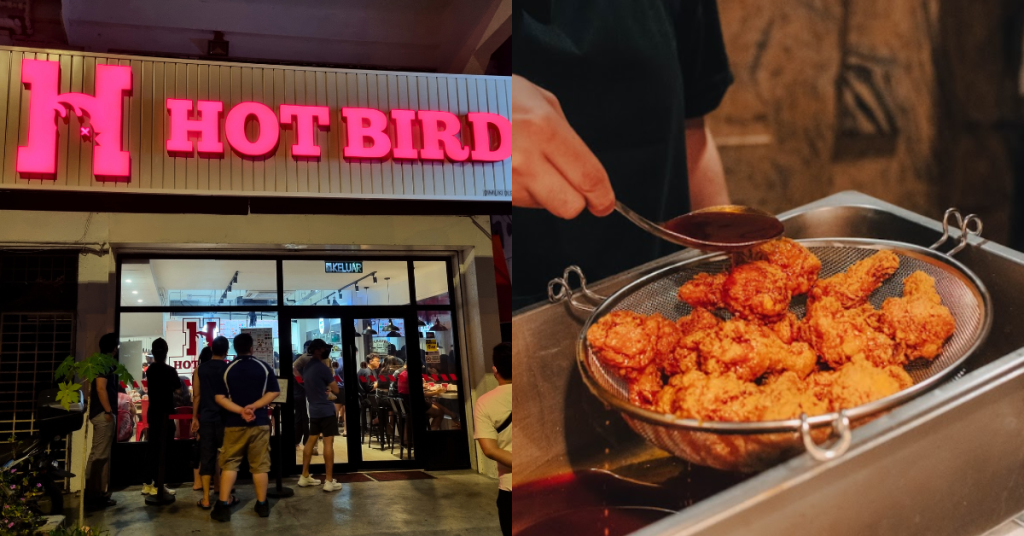
I have yet to find someone who hates fried chicken. You might dislike certain fried chicken brands or parts of the chicken, but most people seem to share the consensus that fried chicken done right is just really, really delicious.
Beyond international brands like KFC and Texas Chicken, many homegrown offerings have been mushrooming over the years. One of those offerings is Hot Bird, touted to be one of the first Nashville-style hot chicken specialists in Malaysia.
Hot Bird was founded by Kelvin and Ee Wen, a Malaysian husband-and-wife duo. The couple met in Melbourne, Australia, during their final year in university.
While Ee Wen’s background is in marketing, Kelvin had always been involved in the culinary scene. Having worked at Lucy Liu and Rock Pool in Melbourne, then at Jing Ze, Malaysia, he always dreamt of opening his own restaurant.
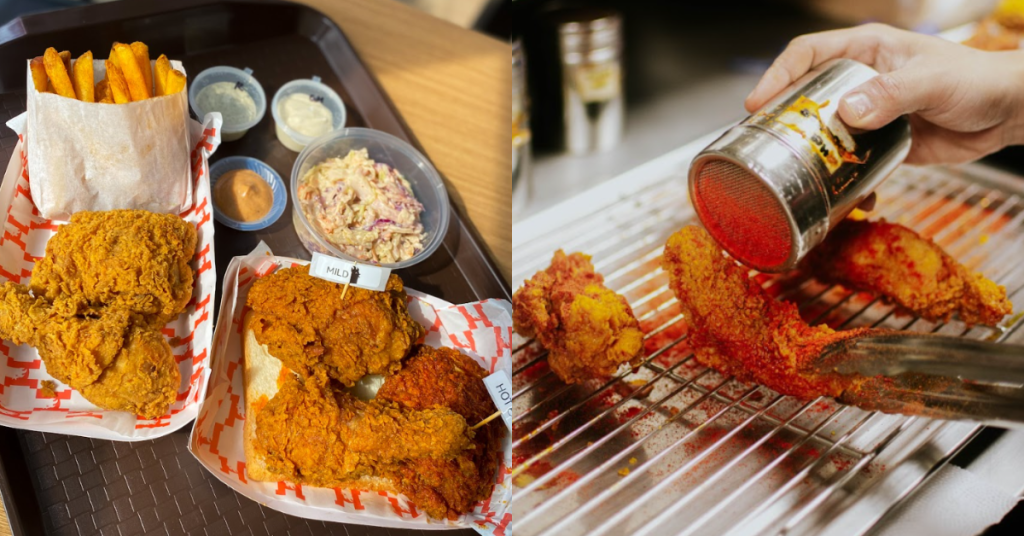
The moment that pushed the couple onto the path of entrepreneurship was the pandemic.
“The MCO made us think hard about our future and our ability to have more control over our financials,” Ee Wen shared with Vulcan Post. “Hence, we started experimenting our products and decided to take a chance and open Hot Bird, introducing what we believe is very niche in the market.”
Hot Bird was thus established in April 2022.
Heating up the scene
If you’re a fried chicken lover and have never been to Hot Bird, you’re missing out. Even more so if you love spicy foods.
Hot Bird, as its name points to, offers a variety of spice levels—Mild, Hot, Super Hot, Burn Baby Burn, and Reaper.

With both Kelvin and Ee Wen having high spice heat tolerance, it makes sense why they decided to go for hot chicken.
But while many Malaysians seem to pride themselves on having an affinity for spicy foods, not everyone can say the same.
Keeping this in mind, the couple did their best to find a range to fit Malaysians’ tastebuds when curating the heat levels.
“Aside from the heat levels, the original Nashville style is oilier and more bitter than what we are serving,” the co-founder added. “Through our own R&D and customers’ feedback, we have localised our product to be more acceptable to local tastebuds.”
Ee Wen said that many compare the bestselling Hot option to the flavour of local chili padi. Meanwhile, the least selling heat level is definitely the reaper, as not many can take it.
“This level caters more towards thrill seekers,” she said.
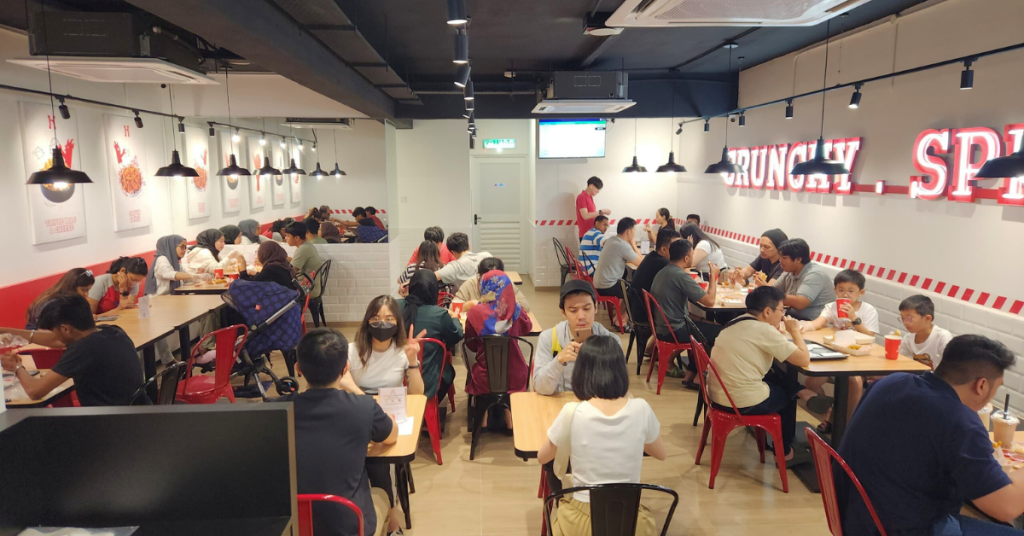
For the spicy intolerant folks, there’s also a “no heat” option.
If you’re worried the flavours would be lacking, there’s a range of add-on sauces including Garlic Mayo, Smokey BBQ, Cool Ranch, Southern Gravy, Tang Buffalo, and Comeback.
For that perfect southern soul food experience, there’s also items like Cajun fries, mac and cheese, as well as milkshakes.
“Currently, all our ingredients are sourced from halal suppliers,” Ee Wen assured. “We also ensure no pork or alcohol is served in our premises.”
Fanning the flame together
It’s true that Hot Bird does have a pretty unique offering (and a well-executed one, if I say so myself), but even with a clear USP, it’s not easy to sustain a business through the pandemic and even beyond.
Ee Wen credits their success to the strict SOPs that their team follows. “It is thanks to our employees who have maintained our quality and service and that has helped expanded Hot Bird to what it is today,” she said.
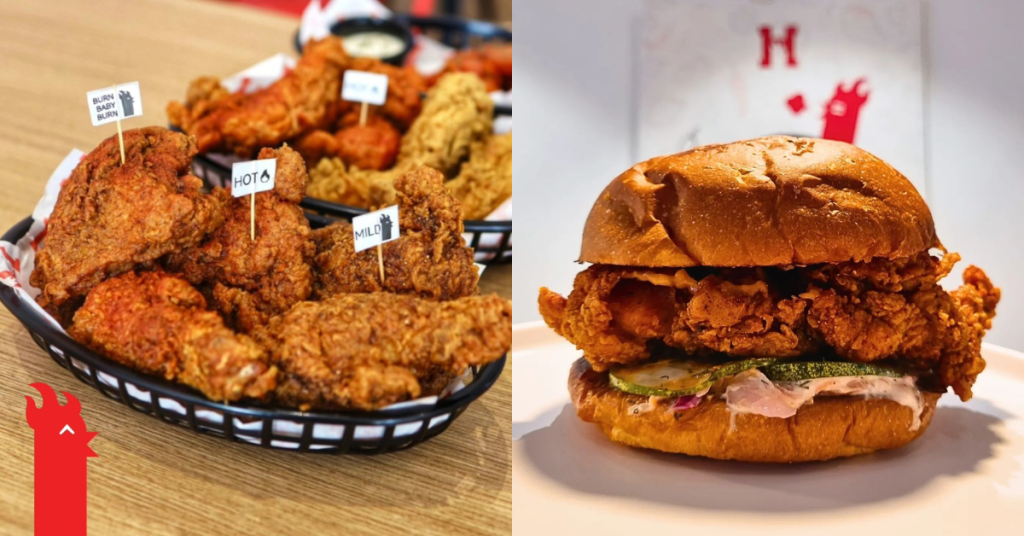
Leading these employees are Ee Wen and Kelvin, of course. While being a couple can bring synergetic effects, it also comes with its own challenges—something that Ee Wen acknowledges.
“The most difficult part is knowing when to draw the line as we both have very strong opinions,” she said. “However, a clear demarcation between roles and duties really helps to iron this out.”
As of today, the couple has grown Hot Bird to a second branch in Subang, opened last December.
Comprising two storeys, the SS15 outlet seats 90 pax, a major upgrade from its one-lot outlet in Damansara Utama.
“We were initially offered to take up two lots, but being so new in the market, and with it being our first outlet, we decided to just take up one lot,” she said. Because of that, you’ll often see queues outside of the Damansara outlet.
They also shared with Vulcan Post that they will be opening a third store in KL come December 2024.
This steady growth is a testament to Hot Bird’s intentions, aiming to focus on quality rather than quantity. That said, it seems like the team is finally ready to ramp up their expansion plans.
“In 2025, we are planning to open two more outlets in Klang Valley as well,” she said. “We have already secured a location for one of it and we’re in the midst of looking for one more location.”
Ee Wen also revealed that the team does have intentions to franchise in the near future. On top of that, they may also be looking into entering the retail products space with spices or sauces.
Keeping the passion burning
F&B is a very competitive industry, and this is especially true with fried chicken. Being such a mass-friendly and popular item, there are many local and global brands in Malaysia offering it.
“It is a demanding industry and people always want to try new things,” Ee Wen acknowledged.
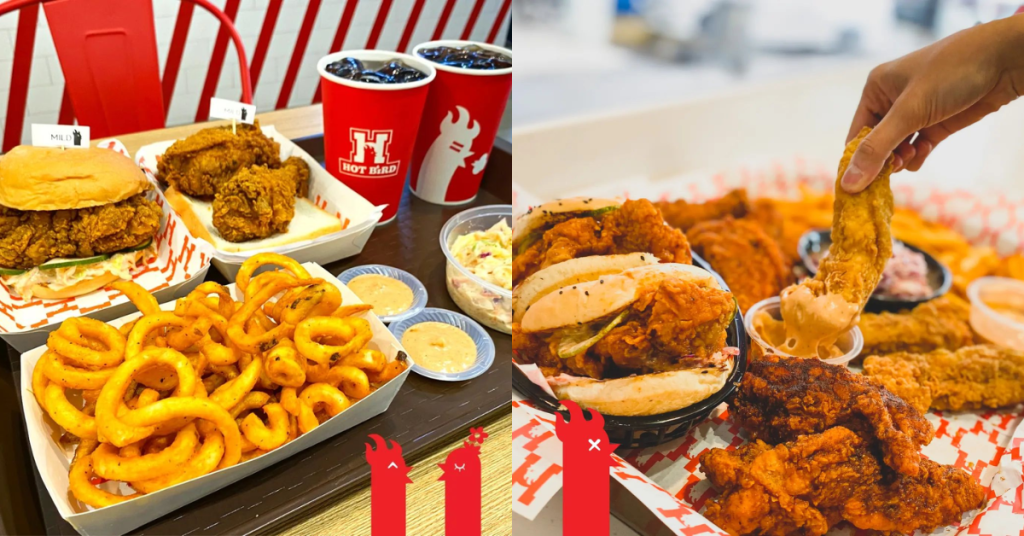
However, she is confident that their product quality and service sets them apart.
That said, manpower and labour is a big challenge, especially as the team scales. With that in mind, they claim to try their best to ensure that employees are well taken of. This means offering competitive remuneration and a good working environment.
Ee Wen’s advice for fellow entrepreneurs—and for herself—is as such: “Treat your employees well and with respect, be open to criticism and advice, and be prepared to work long hours to grow your business.”
With these values, the team hopes to expand Hot Bird throughout Malaysia, and even into neighbouring countries.
Also Read: This Microsoft Copilot workshop convinced me that AI can help content creators, here’s how
Featured Image Credit: Hot Bird
How this wellness app plans to break records by helping M’sians lose 100,000 kg in a year
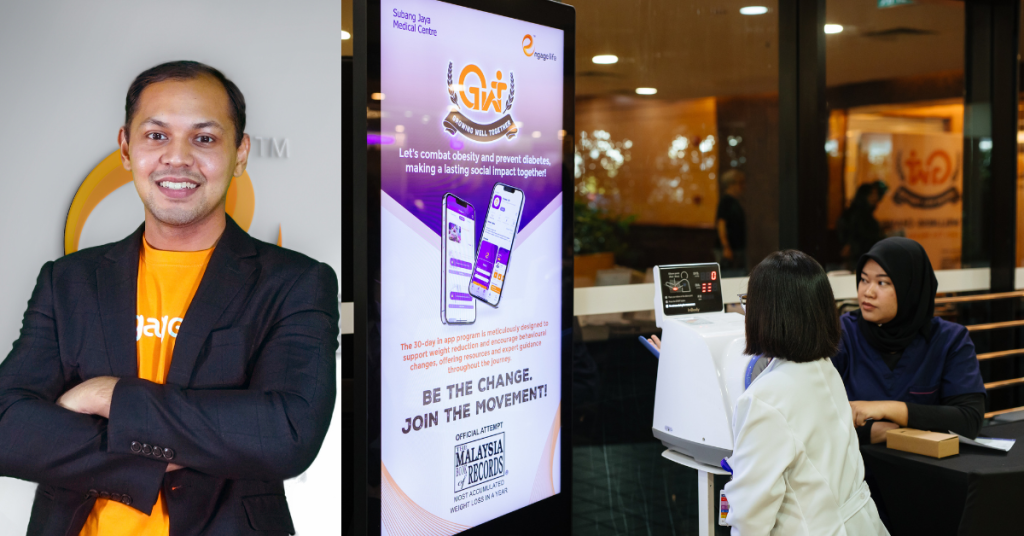
[Written in partnership with Engage Life, but the editorial team had full control over the content.]
Do you think Malaysians can lose 100,000 kg collectively in one year?
Well, local wellness startup Engage Life thinks it’s possible through their Growing Well Together (GWT) programme.
Growing Well Together (GWT) is a national initiative by Engage Life aimed at addressing urgent health concerns through collective efforts. Currently, Engage Life is focusing on tackling Malaysia’s rising challenges with obesity and diabetes.
Together with their official healthcare partner Subang Jaya Medical Centre, the initiative was launched on August 1, 2024. As a part of GWT, Engage Life is pursuing an ambitious challenge with the Malaysia Book of Records to achieve a collective weight loss of 100,000 kg in a year.
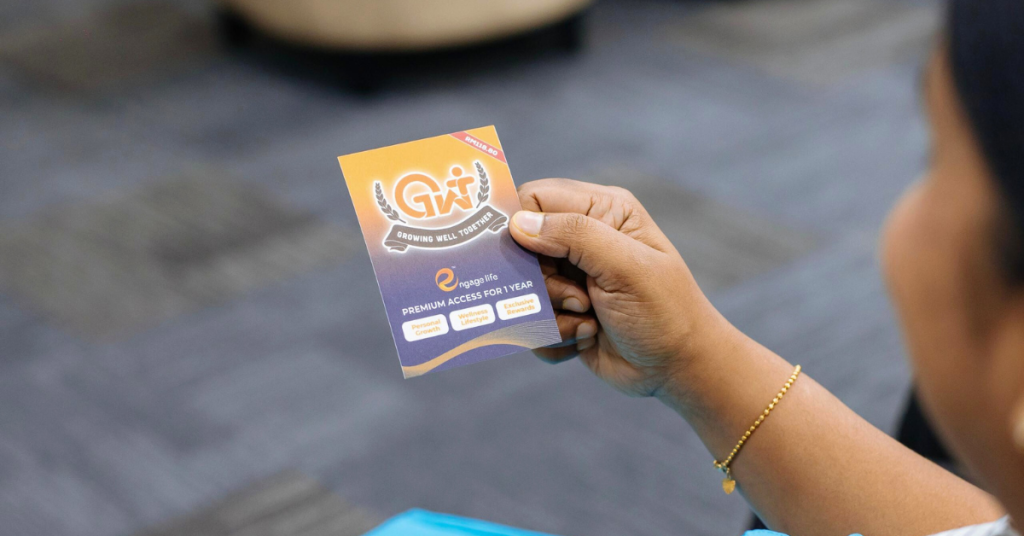
Founder Paresh Subramaniyam believes this goal is a powerful way to unify and motivate individuals across the nation to join a shared wellness journey that can make a meaningful difference in combating obesity and reducing diabetes risk.
“By setting this shared goal, our aim is to create a ripple effect that inspires them to make sustainable changes to their health while contributing to a significant national impact,” the founder told Vulcan Post.
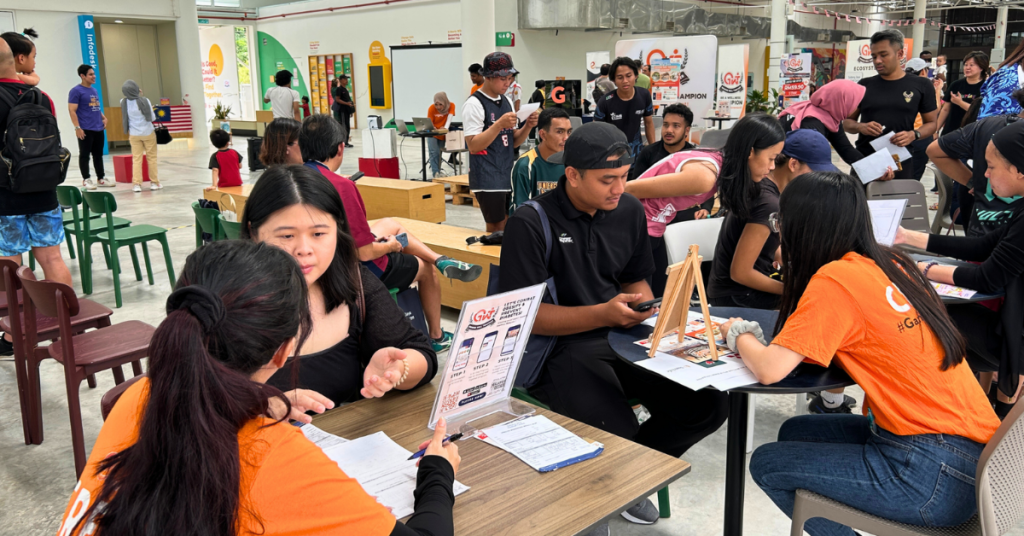
To achieve this goal, the app will feature a structured 30-day programme, designed for sustainable weight management that emphasises holistic wellness.
What’s more, the GWT programme is actually accessible to all Malaysians. This way, everyone can join the journey of achieving their optimal weight and improving overall health.
When Engage Life collectively achieves the Malaysia Book of Records challenge of losing 100,000 kg, every participant who contributes to this target by losing at least 1kg will receive a certificate of participation.
Aside from individual users, Engage Life also invites corporations to join in on GWT. Corporates can join in as a wellness sponsor, empowering their employees and community to take charge of their wellness.
Revolutionising the wellness industry
Paresh Subramaniyam has been involved in the wellness industry for over a decade. With a background in physiotherapy and expertise in Muay Thai, his career path led him to a senior role as General Manager at Celebrity Fitness.
However, he wasn’t satisfied with the wellness and fitness solutions in the market. He noticed a pressing issue during his time in the industry: People often cancelled their gym memberships, citing their busy work lives as the reason.
“This realisation planted the seed for Engage Life—a vision to integrate wellness directly into the workplace, making it more accessible for everyone, regardless of their hectic schedules,” Paresh said.
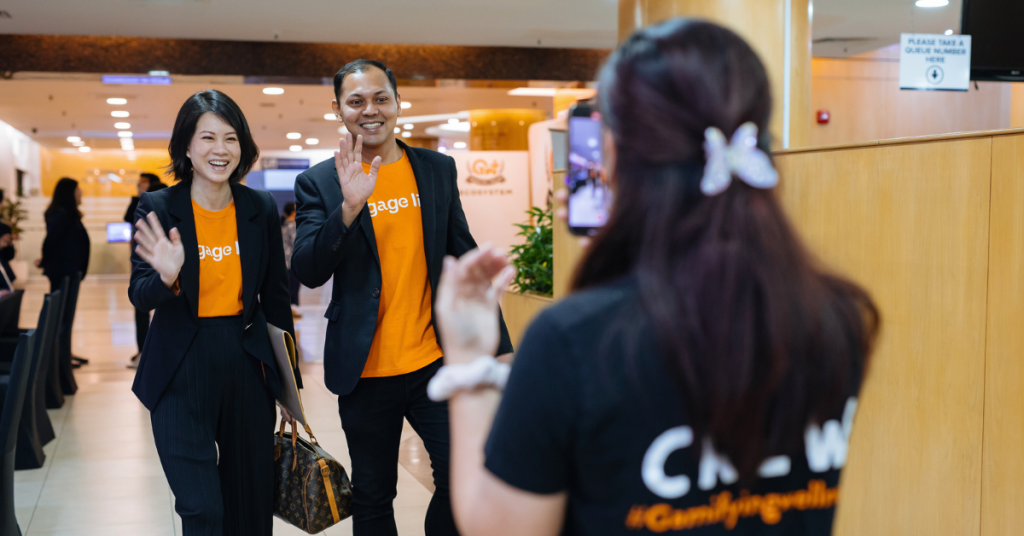
The platform was created by Paresh as well as his wife and co-founder, Vanessa Voo.
Engaging beyond the surface
More than a service, Engage Life is a movement toward lasting wellness transformation. Essentially, it’s a wellness solution that goes beneath surface-level fixes.
Initially, the startup was focused on delivering in-person programmes and services, but quickly pivoted during the pandemic to launch the Engage Life app.
Targeting individuals as well as corporates, the app offers gamified solutions to make wellness fun and approachable, in turn encouraging long-lasting habits.

These programmes are also personalised, allowing users to set their own wellness goals, whether that be achieving a healthier weight, reducing stress, or increasing physical activity.
From there, they can join structured programmes and gain access to expert resources and guidance to ensure consistent, sustainable progress.
“We recognised that many wellness programmes offer quick results, but don’t necessarily lead to long-term transformation,” Paresh pointed out. “We wanted to change that to create sustainable societal change by embracing wellness as a multi-dimensional journey.”
These “dimensions” include physical health, mental well-being, social connections, and personal growth.

Engage Life’s mission “to enhance quality of life in all its dimensions” guides all of its programmes, including its latest initiative, Growing Well Together.
Why should corporations care?
As Paresh had shared, many working adults end up quitting the gym due to their busy work lives.
But what if their companies can actually incentivise and incorporate wellness into their employees’ lives? Not only would individuals’ wellness regimen improve, it would also end up benefitting employers.
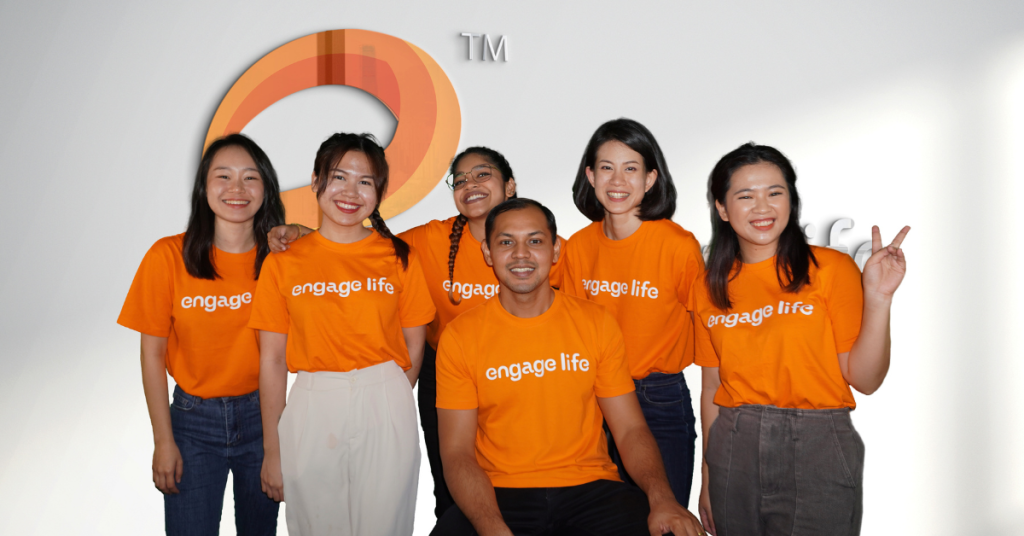
“When it comes to reducing risk exposure, we help corporations address wellness holistically, which can lead to significant reductions in healthcare costs and absenteeism over time,” Paresh said.
He elaborated, “By fostering a healthier, more engaged workforce, companies can mitigate issues like burnout, stress-related absences, and preventable health conditions, which can otherwise pose operational and financial risks.”
Plus, the app serves as a powerful management tool for HR teams. It allows companies to consolidate their wellness initiatives, gain valuable insights, and track employees’ engagement and wellness data.
Paresh revealed that Engage Life’s services have resulted in an estimated cost savings of RM7 million on medical insurance premiums.The figure was derived from surveys conducted with clients, focusing on their insurance premium claims data and wellness programme outcomes.
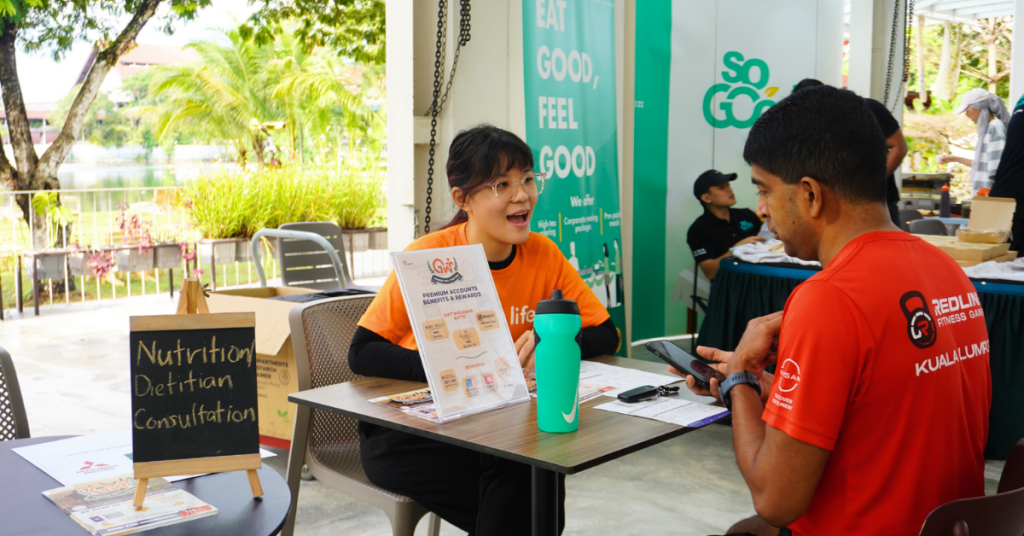
With a goal of accessibility, Engage Life has set its corporate rates to start as low as RM3.50 per user, while individual subscriptions begin at RM9.90 per month.
Today, Engage Life has become a trusted wellness partner for many customers, including over 30 corporate clients and numerous SMEs.
The reason why corporations work with Engage Life is clear—the wellness startup provides a fully customisable wellness solution, allowing companies to select programmes that best align with their needs, from fitness and mental health programmes to nutrition and preventive care.
By engaging with corporations and creating accessible programmes such as Growing Well Together, Engage Life is mobilising the whole nation to create a healthier Malaysia.
Also Read: Mega sales are coming up in M’sia, here’s how to ensure that your parcels don’t go missing
Featured Image Credit: Engage Life
This Johor restaurant specialises in stir-fry food served in American-styled takeout boxes
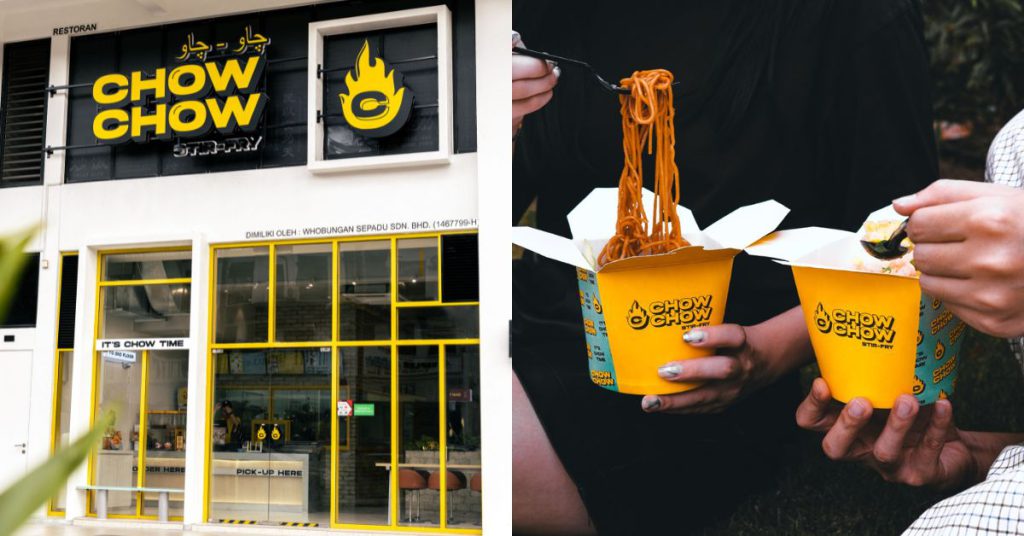
When you think of Chinese takeout, images of those iconic little boxes, packed to the brim with stir-fried goodness, may come to mind.
For CHOW CHOW, a new F&B brand in Malaysia, this nostalgia, combined with innovative flavours, is exactly what they’re tapping into.
CHOW CHOW actually brings together an interesting wordplay in Chinese, English, and Bahasa Malaysia. In Chinese, “炒” (pronounced as “chao”) translates to “stir-fry”, while in English, “chow” is slang for food or eating.
Add in the Bahasa Melayu touch, where doubling a word (like “goreng-goreng”) implies abundance, and CHOW CHOW comes to mean “stir-fried food” in a fun, multicultural twist.
The people behind the wok
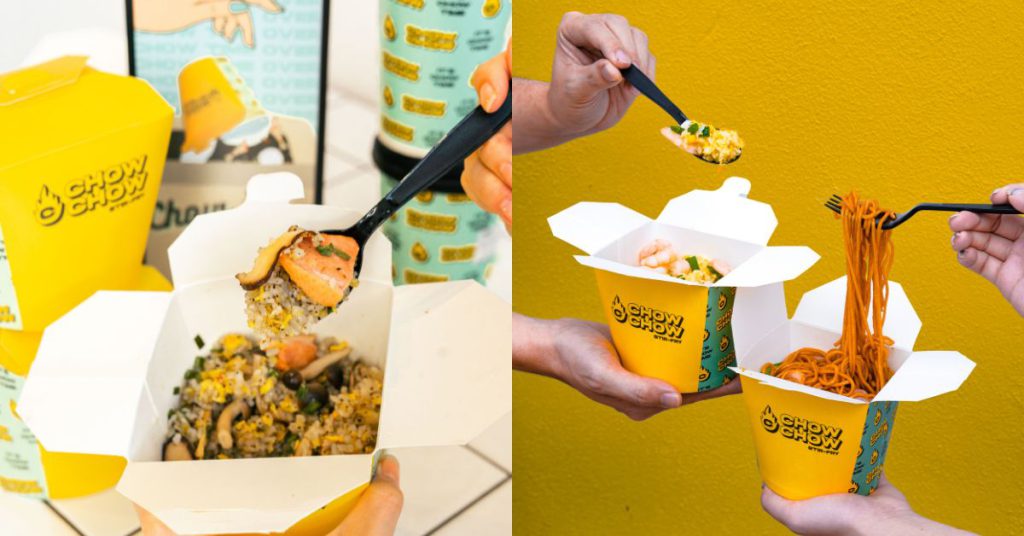
The inception of CHOW CHOW began when KZ Chua, who had dabbled in the food and beverage industry after leaving his previous career in waste management, met Phay Tze Hui, a 28-year-old with over seven years of experience in a high-end Chinese restaurant chain.
They were joined by Rizam, a former high-end automotive professional who decided to switch gears and dive into F&B. Each brings their own skill set, from Phay’s culinary expertise to KZ’s branding savvy and Rizam’s management experience, making this team a well-rounded powerhouse.
The spark for CHOW CHOW struck when KZ tried Phay’s fried rice and saw the potential to bring it to a wider, Muslim-friendly market.
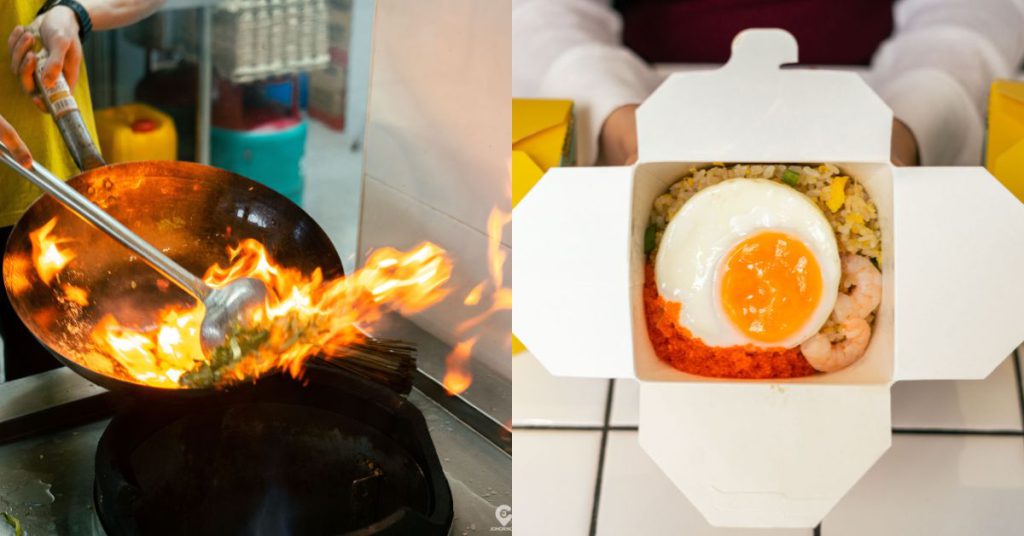
“I saw something special in the way they made their fried rice,” KZ shared. “So, I suggested we go beyond traditional fare and make it more inclusive and modern.”
Fast food with a fast takeout twist
From the outset, CHOW CHOW has aimed to be a takeout-orientated brand with a “fast food” concept that prioritises self-service and convenience.
Their products are served in portable paper boxes, a practical choice that resonates with the brand’s modern image and simplifies their operational setup.
“It’s the kind of packaging that reminds you of those American sitcoms with Chinese takeout boxes—customers actually love it,” the founders said.
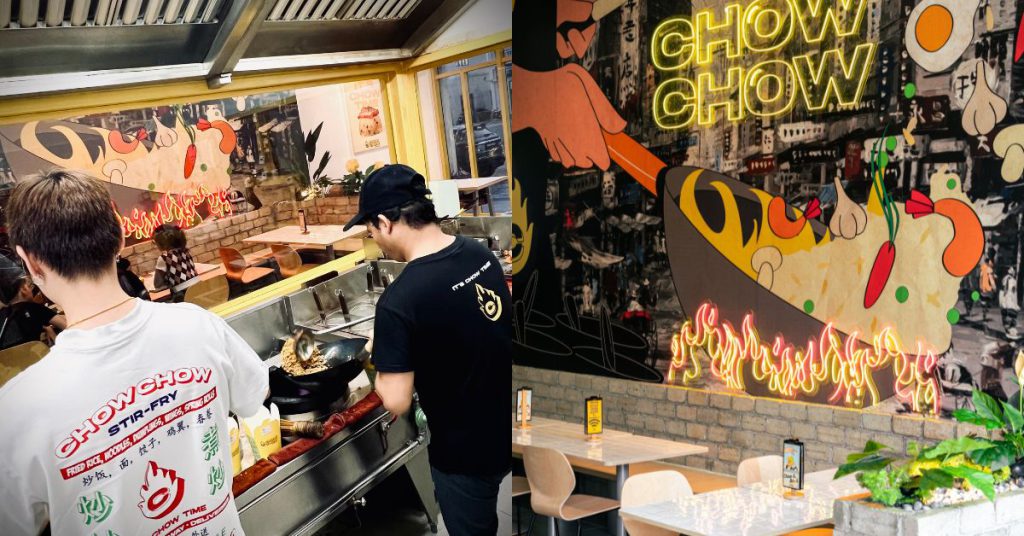
Operating from an apartment complex in Iskandar Puteri, CHOW CHOW’s location was a happy accident.
Initially, they intended to open in a shop lot nearby but found the apartment building suited their needs even better, especially with the high concentration of students from nearby universities. “We were in the right place at the right time,” they reflected.
Bridging the Muslim-friendly gap in Chinese cuisine
One of the major hurdles CHOW CHOW faced was building trust with their Muslim customer base, especially since Chinese food often carries cultural misconceptions about certain ingredients and cooking techniques.
“We recognise a huge gap in the Malaysian market for casual, Muslim-friendly, Chinese cuisine. Big
restaurants with big table dining were the usual suspects for Muslim-friendly Chinese. The casual,
Muslim-friendly Chinese food gap is the exact gap that we intend to fill,” noted the founders.
To bridge this gap, they are in the process of applying for halal certification. However, their Ingredients are sourced from halal suppliers.
“For now, we are Muslim friendly. We want CHOW CHOW to be a space where everyone, including our Muslim friends, can enjoy delicious Chinese-style food without any concerns,” they told Vulcan Post.
Their menu proudly includes 10 core types of fried rice, alongside dumplings, fried chicken, and tofu dishes—all affordably priced between RM7.90 to RM13.90.
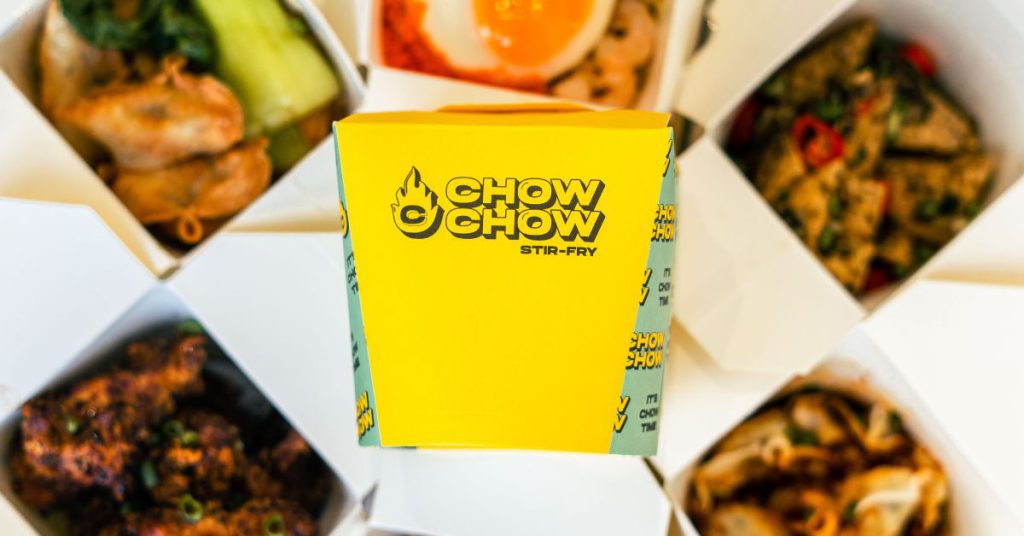
And if you’re sceptical about their authenticity, a quick look at their 2024 Chinese New Year “NO XO Fried Rice” campaign might sway you. This initiative aimed to educate the public on XO Sauce, which, contrary to popular belief, doesn’t contain the alcoholic cognac.
Instead, it’s a luxurious blend of seafood and spices, named for its premium appeal. “We had fun with it,” they admitted, “And our customers loved learning the truth behind the dish.”
Pop-ups, partnerships, and expansion dreams
CHOW CHOW has also embraced pop-ups and catering, a decision driven partly by popular demand and partly by the convenience of their packaging.
Their pop-ups often offer a more limited, streamlined menu, making it easier for new customers to get acquainted with their core products.
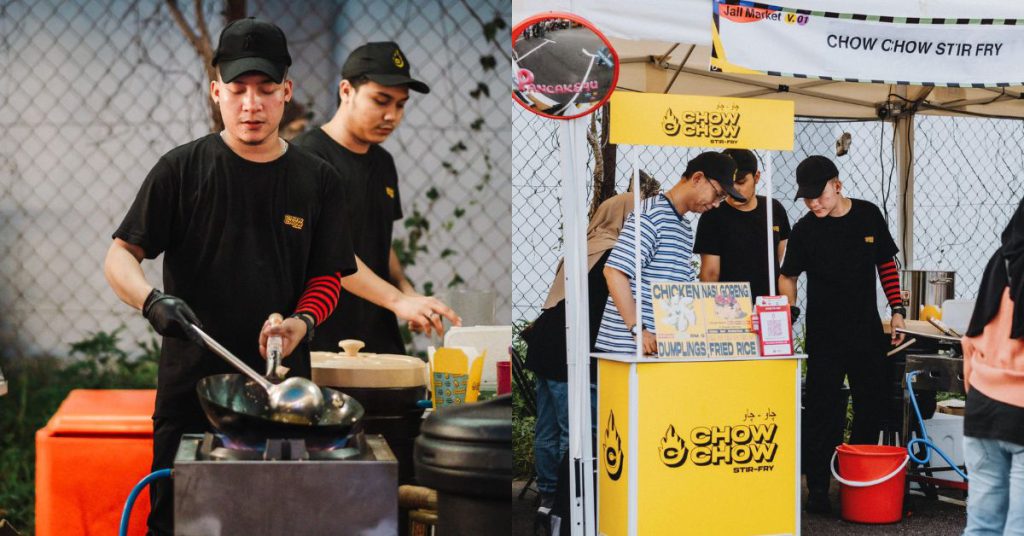
For them, these pop-ups are both a revenue stream and a way to increase brand visibility. “Catering and pop-ups have been a great way for us to reach areas we otherwise wouldn’t,” the trio explained.
CHOW CHOW’s next big vision? A national expansion across Malaysia, potentially through franchising, aiming to make fried rice synonymous with their brand.
The road ahead
CHOW CHOW’s founders have big plans, but they’re not rushing. They’re keen on expanding sustainably, keeping a steady pace while cultivating a loyal customer base.
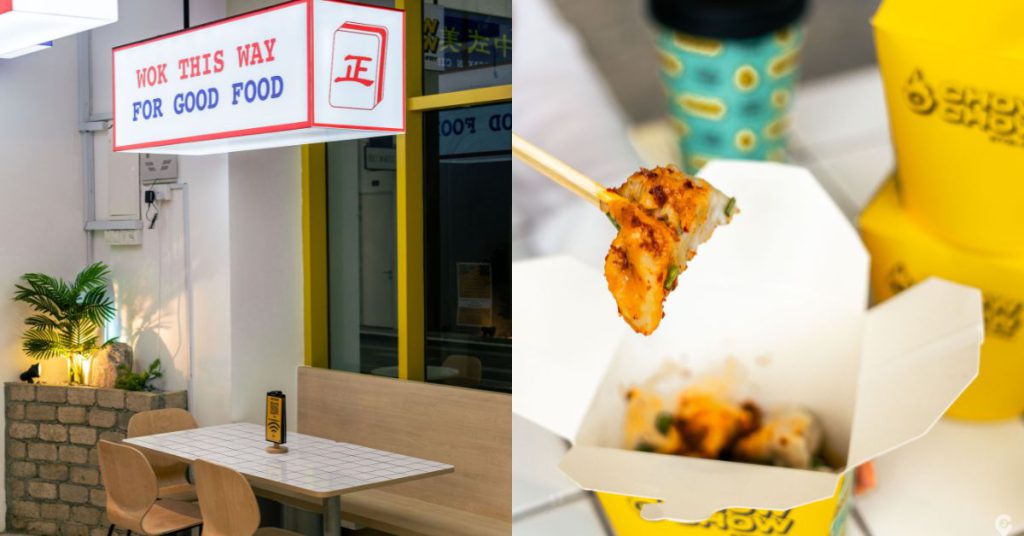
They’re also keen to introduce more culturally inspired, Muslim-friendly Chinese dishes, bridging cultural divides through food.
Will CHOW CHOW really become the next big name in fast-casual dining? Only time will tell. But if you ask KZ, he’s already dreaming up creative offerings for future markets. “The possibilities are endless when you have a wok and some creativity,” he said with a grin.
For now, CHOW CHOW is serving up delicious, stir-fried dishes in those iconic takeout boxes, proving that sometimes, with the right blend of tradition and innovation, you can stir up more than just food—you can stir up a community.
- You can learn more about CHOW CHOW here.
- Read other articles we’ve written about Malaysian startups here.
Also Read: This Microsoft Copilot workshop convinced me that AI can help content creators, here’s how
Featured Image Credit: CHOW CHOW
